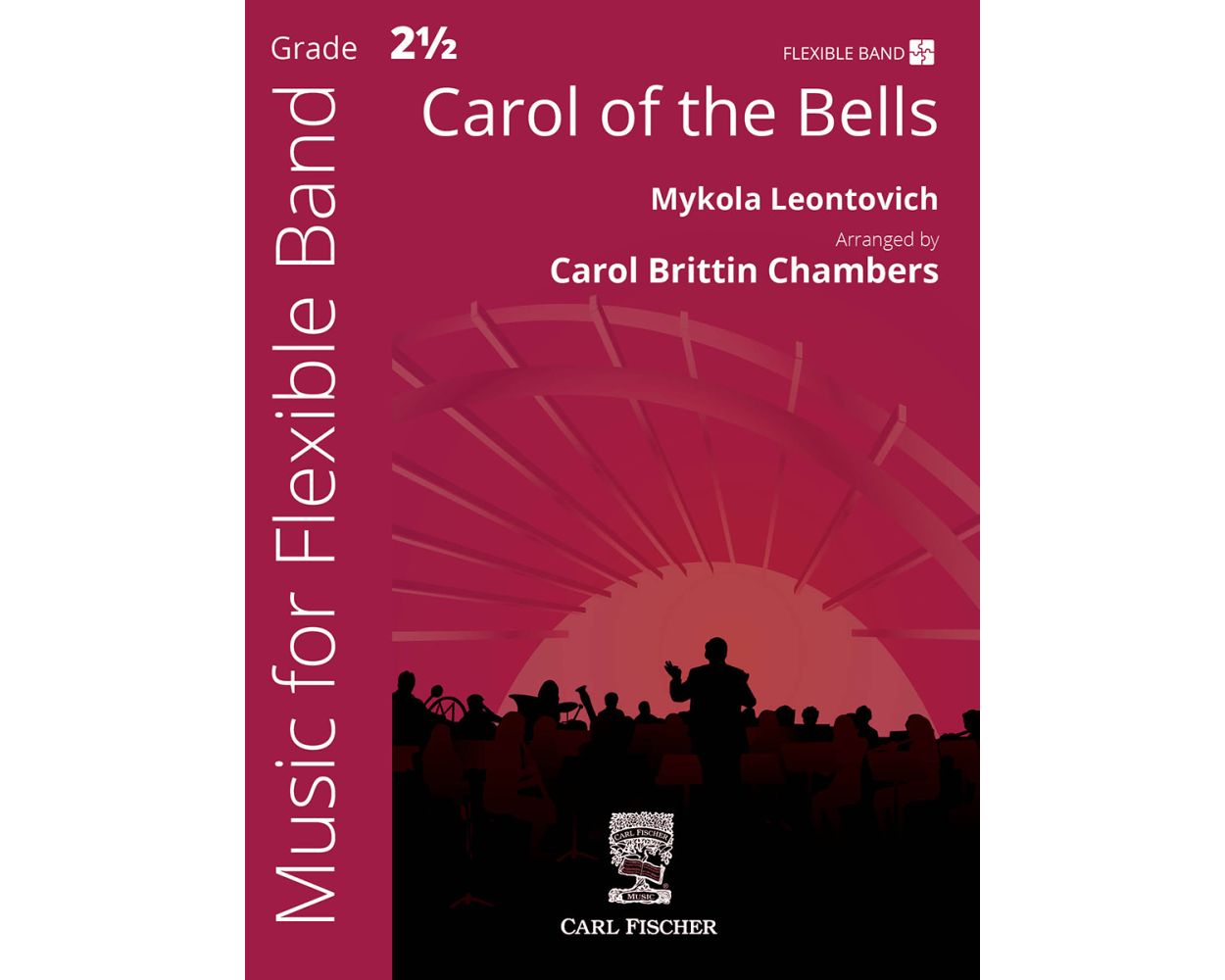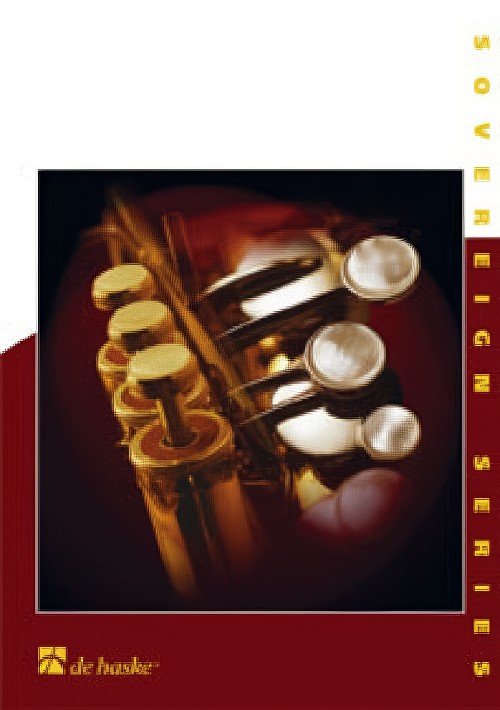Results
-
 £73.50
£73.50A Touch of Jazz!
In the words of the great Duke Ellington, 'It Don't Mean a Thing (If It Ain't Got That Swing),' and that song title is just one of the tasty morsels in this concert band salute to the world of jazz. The medley just plain cooks when these other classics are added to the pot: The Swingin' Shepherd Blues * 'Round Midnight * Take Five * Li'l Darlin' * C Jam Blues * Cute. Cool, man! (6:25)
Estimated dispatch 3-5 working days
-
£85.00
MOCKBEGGAR VARIATIONS (Concert Band) - Woolfenden, Guy
Includes: Prelude, Theme and Five VariationsUnlike my other pieces for concert band, Mockbeggar Variations has no roots in any of my work for the Royal Shakespeare Company, but resulted from a commission by Robert Roscoe for the Berkshire Youth Wind Orchestra, with funds provided by the Berkshire Young Musicians Trust. Robert, on learning that I was stuck for a suitable title, and noting my penchant for the unusual, suggested the address of the Trust - Mockbeggar House - might take my fancy.The Prelude hints at the melodic and harmonic material of the Theme, which appears in the thirty-first bar, distributed between various solo instruments and small groups of players. The five succeeding variations are contrasted in mood, tempo, style and instrumentation.A large part of the score was written in a chalet high in the Swiss Alps with a continual clangour of sixteen different pitches of cow bell constantly ringing in my ears. There is no Mahlerian hint of this in the music, nor was my wife, Jane, successful in shooing the cows away or muffling their bells.....! - GW
Estimated dispatch 7-14 working days
-
 £49.00
£49.00Carol of the Bells - Mykola Leontovich
This fun, fresh, and flexible arrangement of the beloved holiday classic Carol of the Bells, from Carol Brittin Chambers, can be played with as few as five wind or string players! The various recognizable motifs are passed around the ensemble, giving everyone something interesting to play. Chambers incorporates energetic grooves with the bass line and percussion, as well as a new B melody that adds extra technique and a fresh sound. Students and audiences will love this fresh take on the classic in your next holiday concert, and educators will love Chambers' attention to the pedagogical details. Use this piece to introduce or reinforce the following musical concepts: Steady pulse in a driving 3/4 meter, definition of ostinato, accidentals (minimal), and syncopated feel (minimal)
Estimated dispatch 12-14 working days
-
£102.99
A Day at the Museum - James Curnow
In A Day at the Museum the renowned composer James Curnowpresents four contrasting types of art that will be found in an artexhibition. The work is divided into five movements, Promenade (walking between exhibits), Landscape (Van Gough and Rubens), Portrait (Manet), Seascapes (Monet) and Sculpture. Take a walk through the world's greatest museum and let your mind recall the pleasure of seeing works by the great masters of the art world.
Estimated dispatch 7-14 working days
-
£102.99
A Day at the Fair - James Curnow
Explore a child's imagination with this colorful piece depicting the sights and sounds of the county fair! The five-movements take about five minutes to perform in their entirety, including: Parade; Haunted House; Carousel; Midway and Rodeo. From the snake charmer, to the cowboys to the ring toss, there is something here that will bring back fond memories to every person in the audience! Fun for all!
Estimated dispatch 7-14 working days
-
£179.99
Amazonia - Jan Van der Roost
This major concert work cosists o five movements.1st movement: La Laguna del ShimbeSituated high up in the Andes mountains in Northern Peru are the Huaringas, a group of lagoons in isolated and mysterious surroundings. The water has healing powersand for centuries traditional healers have settled there in small villages. From far the sick come to the Huaringas to be treated in nightly rituals, in which the hallucinating juice of the San Pedro cactus gives the prophet a look inside hispatient. The biggest lagoon is the "Laguna del Shimbe", one of the countless wells of the immense Amazon stream.2nd movement: Los AguarunasFurther downstream in Northern Peru we come across the rain tribe of Los Aguarunas. It's a proud, beautiful andindependent race, which has never succumbed to domination, not even from the Incas. They live from everything the forest has to offer: fish, fruit, plants, ... . They also grow some crops and live as semi-nomads. They take their fate into their ownhands and after having made contact with modern civilisation, they have integrated new elements into their lives without betraying their own ways.3rd movement: MekaronMekaron is an Indian word meaning "picture", "soul", "essence". The Indians are theorigina inhabitants of the Amazon region. They either live in one place as a group or move around a large region. They all have their own political system, their own language and an intense social life. At the same time they are master of music andmedicine. "Everywhere the white man goes, he leaves a wilderness behind him", wrote the North American Indian leader Seatl in 1885. As a result of these contacts with the whites, the disruption of most Indian societies began. (In this century alone,80 tribes have vanished completely).4th movement: KtuajThis is the name of the initiating ceremony of the Krah tribe in the Brazilian state of Goias, in which young boys and girls enter adult life. They are cleansed with water, painted with redpaint and covered with feathers, after which the ritual dance holds the entire tribe spell-bound.5th movement: Paulino FaiakanIn 1988 the Indian chiefs Faiakan and Raoni Kaiapo came to Europe to protest against the building of the Altamira dam inBrazil. As a result of the dam the Indians would be driven from their traditional land and enormous artificial would be created. The project was supported financially by, amongst others, the European Community. In February 1989 the Indian tribesaround Altamira held a protest march for the first time in their history together. Amongst other things they paid tribute tot Chico Mendez, who, murdered in 1988, was the leader of the rubber syndicate and a fierce opponent of the destruction of theBrazilian rain forest. Brazilian and world opinion was awakened. The building of the dam was -albeit temporarily - stopped.
Estimated dispatch 7-14 working days
-
 £137.99
£137.99The Heart of Lithuania - Jacob de Haan
Composer Jacob de Haan has based The Heart of Lithuania on five folk melodies from Lithuania, a country that despite its small size has a rich cultural heritage. The choice and diversity of emotions, largely determined by the characteristic melodies, take the listener straight to the heart of the Lithuanian people.
Estimated dispatch 7-14 working days
-
 £102.99
£102.99A Day at the Museum (Concert Band - Score and Parts) - Curnow, James
In A Day at the Museum the renowned composer James Curnow presents four contrasting types of art that will be found in an art exhibition. The work is divided into five movements, Promenade (walking between exhibits), Landscape (Van Gough and Rubens), Portrait (Manet), Seascapes (Monet) and Sculpture. Take a walk through the world's greatest museum and let your mind recall the pleasure of seeing works by the great masters of the art world.Duration: 9.30
Estimated dispatch 7-14 working days
-
 £179.99
£179.99Amazonia (Concert Band - Score and Pars) - Van der Roost, Jan
This major concert work consists of five movements:1st movement: La Laguna del Shimbe. Situated high up in the Andes mountains in Northern Peru are the Huaringas, a group of lagoons in isolated and mysterious surroundings. The water has healing powers and for centuries traditional healers have settled there in small villages. From far the sick come to the Huaringas to be treated in nightly rituals, in which the hallucinating juice of the San Pedro cactus gives the prophet a look inside his patient. The biggest lagoon is the "Laguna del Shimbe", one of the countless wells of the immense Amazon stream.2nd movement: Los Aguarunas. Further downstream in Northern Peru we come across the rain tribe of Los Aguarunas. It's a proud, beautiful and independent race, which has never succumbed to domination, not even from the Incas. They live from everything the forest has to offer: fish, fruit, plants... They also grow some crops and live as semi-nomads. They take their fate into their own hands and after having made contact with modern civilisation, they have integrated new elements into their lives without betraying their own ways.3rd movement: Mekaron. Mekaron is an Indian word meaning "picture", "soul", "essence". The Indians are the original inhabitants of the Amazon region. They either live in one place as a group or move around a large region. They all have their own political system, their own language and an intense social life. At the same time they are master of music and medicine. "Everywhere the white man goes, he leaves a wilderness behind him", wrote the North American Indian leader Seatl in 1885. As a result of these contacts with the whites, the disruption of most Indian societies began. (In this century alone, 80 tribes have vanished completely).4th movement: Ktuaj. This is the name of the initiating ceremony of the Krah tribe in the Brazilian state of Goias, in which young boys and girls enter adult life. They are cleansed with water, painted with red paint and covered with feathers, after which the ritual dance holds the entire tribe spell-bound.5th movement: Paulino Faiakan. In 1988 the Indian chiefs Faiakan and Raoni Kaiapo came to Europe to protest against the building of the Altamira dam in Brazil. As a result of the dam the Indians would be driven from their traditional land and enormous artificial would be created. The project was supported financially by, amongst others, the European Community. In February 1989 the Indian tribes around Altamira held a protest march for the first time in their history together. Amongst other things they paid tribute tot Chico Mendez, who, murdered in 1988, was the leader of the rubber syndicate and a fierce opponent of the destruction of the Brazilian rain forest. Brazilian and world opinion was awakened. The building of the dam was, albeit temporarily, stopped.Duration: 12:30
Estimated dispatch 7-14 working days
-
 £124.95
£124.95SWORD AND THE CROWN, The (Prestige Concert Band - Score and Parts) - Gregson, Edward
In 1988 I was commissioned by the Royal Shakespeare Company to write the music for The Plantagenets trilogy, directed by Adrian Noble in Stratford-upon-Avon. These plays take us from the death of Henry V to the death of Richard III. Later, in 1991, I wrote the music for Henry IV parts 1 and 2, again in Stratford. All of these plays are concerned with the struggle for power (the crown) through the use of force (the sword) and they portray one of the most turbulent periods in the history of the British monarchy.This work quickly became established in the mainstream repertoire and has received performances worldwide as well as five commercial recordings and many broadcasts. In 2002 I was approached by the Parc and Dare Band regarding their summer festival and commissioned to do a version for brass band. This was given its first performance in Treorchy Hall by the combined bands of Black Dyke and Parc and Dare conducted by Nicholas Childs.When the Royal Air Force Music Services commissioned me to write a work especially for their British tour in 1991 I immediately thought of turning to this music and transforming some of it into a three-movement suite for symphonic band.The first movement opens with a brief fanfare for two antiphonal trumpets (off-stage), but this only acts as a preface to a Requiem aeternam (the death of Henry V) before changing mood to the English army on the march to France; this subsides into a French victory march, but the English army music returns in counterpoint. Finally, a brief reminder of the Requiem music leads to the triumphal music for Richard Plantagenet, Duke of York, father of Edward IV and Richard III (the opening fanfare transformed).The second movement takes music from the Welsh Court in Henry IV (part 1) which is tranquil in mood; distant fanfares foreboding battles to come are heard, but the folktune is heard three times in different variations and the movement ends as it began with alto flute and gentle percussion.The final movement starts with two sets of antiphonally placed timpani, drums and tam-tam, portraying the 'war machine' and savagery of battle. Trumpet fanfares and horn calls herald an heroic battle theme which, by the end of the movement, transforms itself into a triumphant hymn for Henry IV's defeat of the rebellious forces.- Edward GregsonPerformance time 13'54"Recorded on QPRM117D FESTIVAL OF MUSIC 1991, Massed Bands of the Royal Air ForceRecorded on QPRM120D THE SWORD AND THE CROWN, Central Band of the Royal Air Force'Finale' recorded on QPRM142D FESTIVAL OF MUSIC 2002, Massed Bands of the Royal Air Force)
Estimated dispatch 7-14 working days
